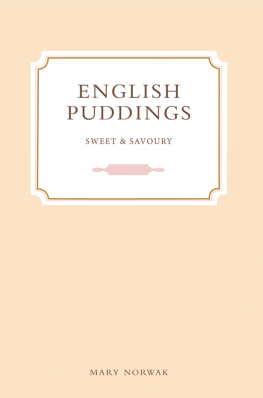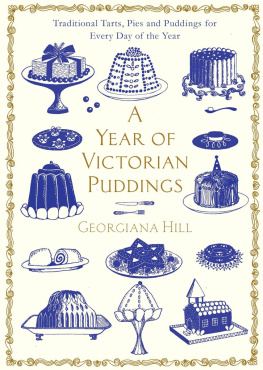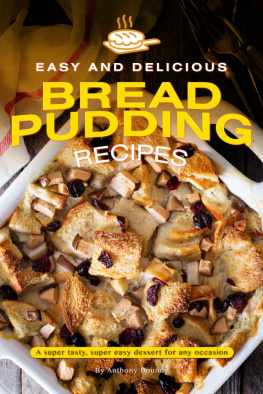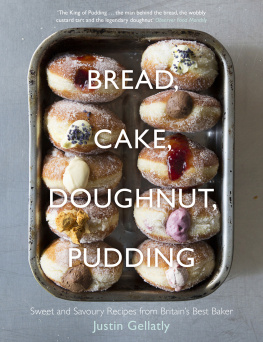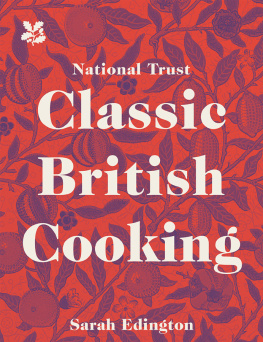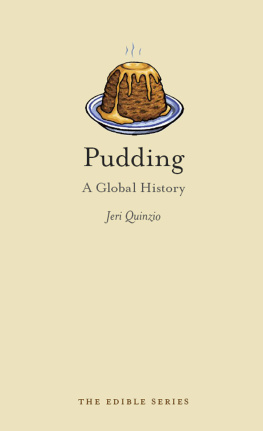
ENGLISH PUDDINGS
ENGLISH PUDDINGS
Sweet and Savoury
MARY NORWAK
No mean woman can cook well. It calls for a generous spirit, a light and a large heart
Eden Phillpotts
GRUB STREET LONDON
Published by Grub Street
4 Rainham Close, London SW11 6SS
Copyright Grub Street 1996, 2004, 2015
Text copyright Mary Norwak 1981, 2015
eISBN 9781910690574
Mobi ISBN 9781910690574
Email:
Web: www.grubstreet.co.uk
Twitter: @grub_street
Facebook: Grub Street Publishing
First published in Great Britain by B T Batsford Ltd, London 1981
A CIP record for this title is available from The British Library
The moral right of the author has been asserted. All rights reserved. No part of this publication may be reproduced, stored in a retrieval system, or transmitted in any form or by any means, electronic, mechanical, photocopying, recording or otherwise without the prior permission of the publisher.
Cookery advisor for original edition: Jane Grigson
Design by Sarah Baldwin
Illustrations by Ella Davis & Sarah Baldwin
Watercolour Brushes by http://mcbadshoes.deviantart.com
SELECTED TERMINOLOGY
| British | American |
| Apples, cooking | Green apples |
| Bicarbonate of soda | Baking soda |
| Cherries, cooking | Tart or sour cherries |
| Coconut, desiccated | Flaked or grated coconut |
| Cornflour | Cornstarch |
| Cream, double | Whipping or heavy cream |
| Cream, single | Light cream |
| Crystallized fruits | Candied fruits |
| Custard powder | Not available; use cornstarch, vanilla essence and yellow colouring (or packet vanilla pudding) |
| Glac cherries | Candied cherries |
| Golden syrup | Not available; use light corn syrup |
| Hazelnuts | Cob nuts or filberts |
| Jam | Preserves |
| Jelly | Jello |
| Marrow | Large zucchini |
| Rice, round grain | Short grain rice |
| Semolina | Semolina flour (not readily available, use farina) |
| Sugar: Caster or granulated | Granulated |
| Soft brown | Light brown |
| Demerara | Light brown |
| Icing | Confectioners |
| Sultanas | Seedless white raisins |
| Syrup, golden | Not available; use light corn syrup |
| Treacle | Molasses |
| Wholemeal | Whole wheat |
PREFACE
Domestic food is wholesome, though tis homely,
And foreign dainties poisonous, though tasteful.
Sir Walter Scott
When the subject of this book was suggested to me, I felt that the term English might be restrictive. How could there be enough to fill a book on one type of dish from just one small country? Little did I guess that I would embark on research that could fill many books and would prove to be a kind of culinary detective story.
English cooking has never been carefully structured like that of France, where dishes are carefully recorded and each permissible variation noted. There simply seems to be no right way to cook in England, and any suggestion of the one-and-only recipe for a favourite or regional dish will always be countered by dozens of equally correct versions. The English have always been sturdy individualists with a loathing for rigid rules, and their cooks have never worried about adding a bit of this and that to any recipe. In both printed and handwritten recipe books there has been a long tradition of footnotes indicating that the reader may do as she pleases when judging texture or colour, or adding flavouring or garnishing. The important thing in the English kitchen has been to make the best of whatever is available, and adaptation has been the secret of survival. When new ingredients were imported, they were simply added to favourite old dishes; when times were hard, substitutions were made for expensive ingredients, so that bread replaced cake, or milk replaced cream, and new dishes evolved.
English recipes have therefore never been static, but have changed subtly in the past eight hundred years, popular dishes often merging together or being influenced by foreign fashions introduced by continental cooks employed in great houses, or by the mixture of French, Portuguese, Spanish, Dutch and German kings and queens who ruled the land. Dishes have also moved up and down the social scale, with medieval court favourites being adapted to everyday use, rustic country dishes being improved for the gentry, and grand recipes imitated by the aspiring lower classes. Further richness has been added by the regional variations, which originally depended on local agriculture, but were often shared with neighbouring counties or given to relatives on marriage, and then became adapted to new local conditions.
All these threads have woven together into a fascinating story, for almost every dish has a small part in English history. For those who wonder why anyone has bothered to tell the story of puddings, I can do no better than quote Thackeray: All people who have natural, healthy appetites, love sweets; all children, all women, all Eastern people, whose tastes are not corrupted by gluttony and strong drink.
My particular thanks are due to Jane Grigson for suggesting the original idea, and to Paula Shea for being an enthusiastic editor. Carolyn Newman has been a tolerant and efficient typist, and kept control of my ever-growing collection of cookery books and bulging files. In preparing this manuscript I have consulted such authorities as Hannah Glasse, Eliza Acton and numerous other cookery writers of bygone years for guidelines on the dating and development of recipes, and, of course, the magnificent work of C. Anne Wilson Food and Drink in Britain (1973). In particular, I must record my most grateful thanks to those ordinary housewives who carefully wrote down their favourite family recipes over the centuries in the many beautiful books that I am now happy to own, and which have given me the key to what the English people really enjoyed eating.
CHAPTER ONE
THE STORY OF PUDDINGS
Let us seriously reflect of what a pudding is composed. It is composed of flour that once waved in the golden grain, and drank the dews of the morning; of milk pressed from the swelling udder by the gentle hand of the beauteous milkmaid. whose beauty and innocence might have recommended a worse draught; who, while she stroked the udder, indulged no ambitious thoughts of wandering in palaces, formed no plans for the destruction of her fellow-creatures: milk, which is drawn from the cow, that useful animal, that eats the grass from the field, and supplies us with that which made the greatest part of the food of mankind in the age which the poets have agreed to call golden. It is made with an egg, that miracle of nature, which the theoretical Burnet has compared to creation. An egg contains water within the beautiful smooth surface; and an unformed mass, by the incubation of the parent, becomes a regular animal, furnished with bones and sinews and covered with feathers. Let us consider; can there be more wanting, more may be found. It contains salt, which keeps the sea from putrefaction: salt, which is made the image of intellectual excellence, contributes to the formation of a pudding.
Dr Johnsons rhapsody on puddings reminds one of the restaurant menus that extol the virtues of dew-fresh morning-gathered mushrooms, but this great man was expressing a proper pride in that unique institution the pudding. It is now difficult to describe what we mean by a pudding, for todays language is sloppy and inexact. Dessert is an inept refinement, for the word applies only to fresh fruit, nuts and sweetmeats offered to end a grand dinner. Sweet is a niminy-piminy shortening of the sweet course that now ends a meal, but does not apply to the whole magnificent range of puddings, and seems to indicate something rather small and nasty that forms the anticlimax of a meal. The workmanlike schoolboy slang of afters or seconds more nearly describes the dish we have in mind, but gives no hint of its glory. Let us then take the word of M. Misson, a French visitor of 1690:

